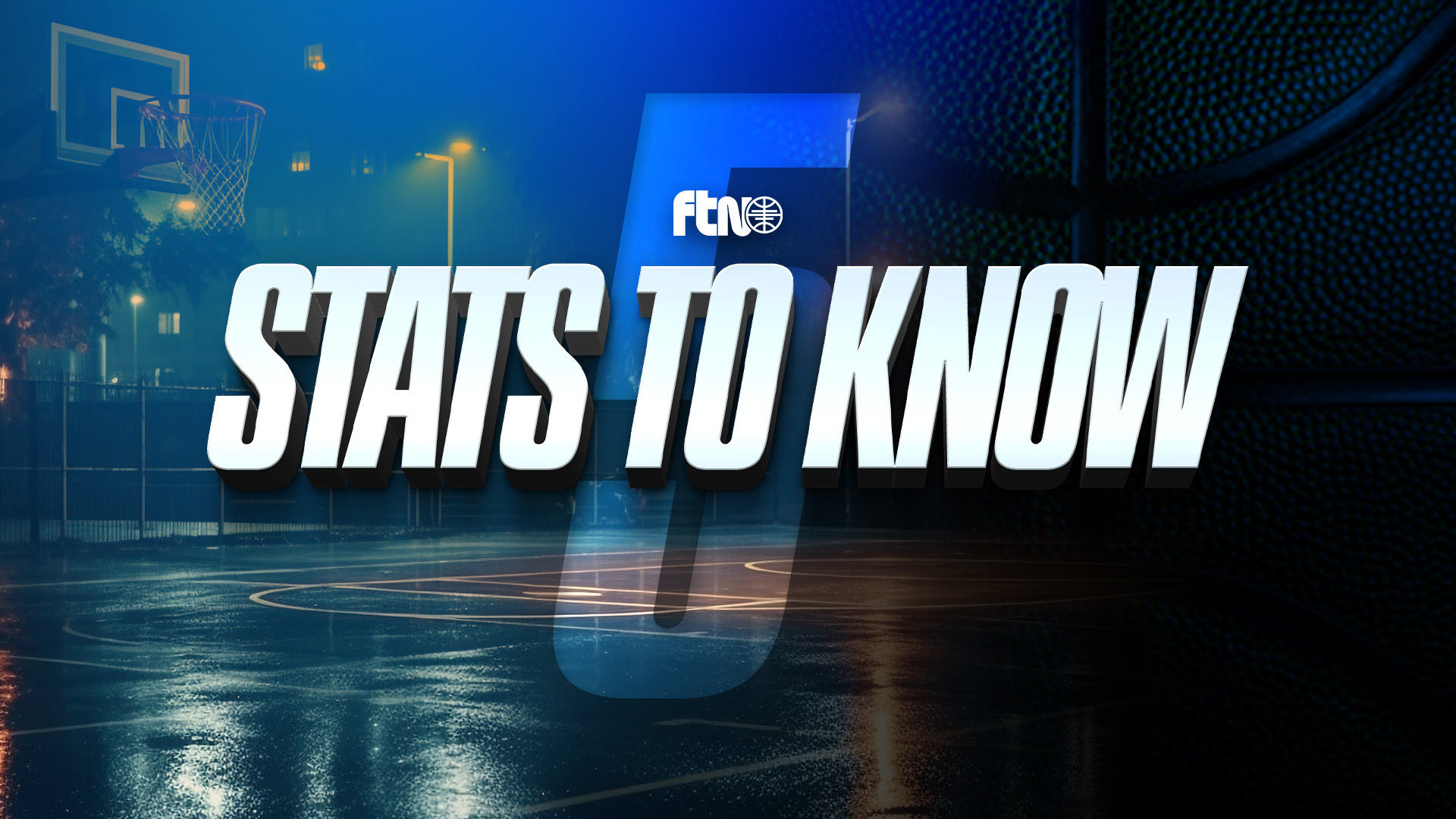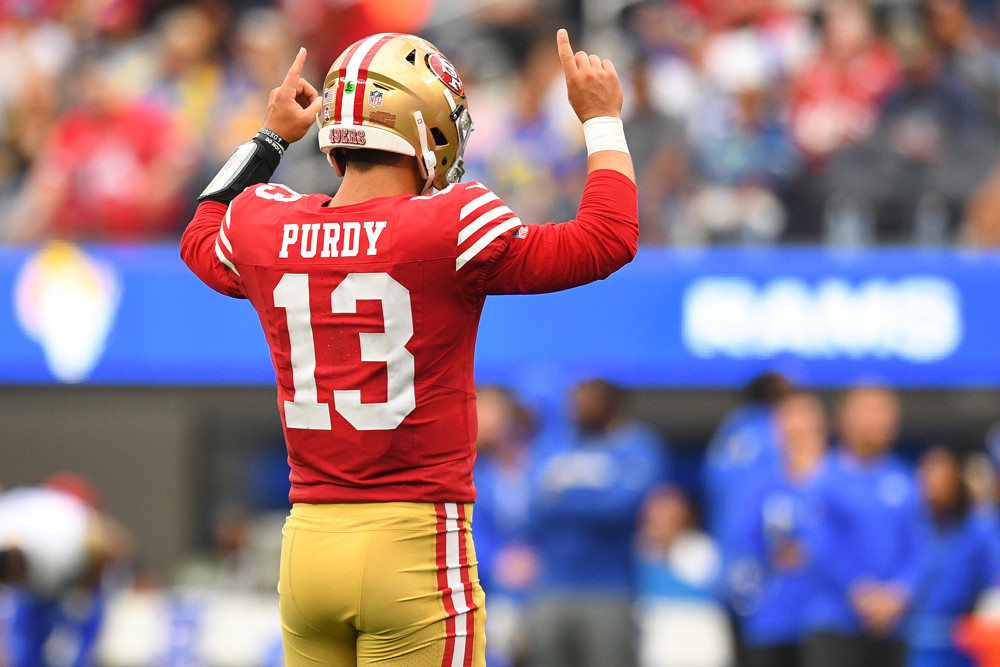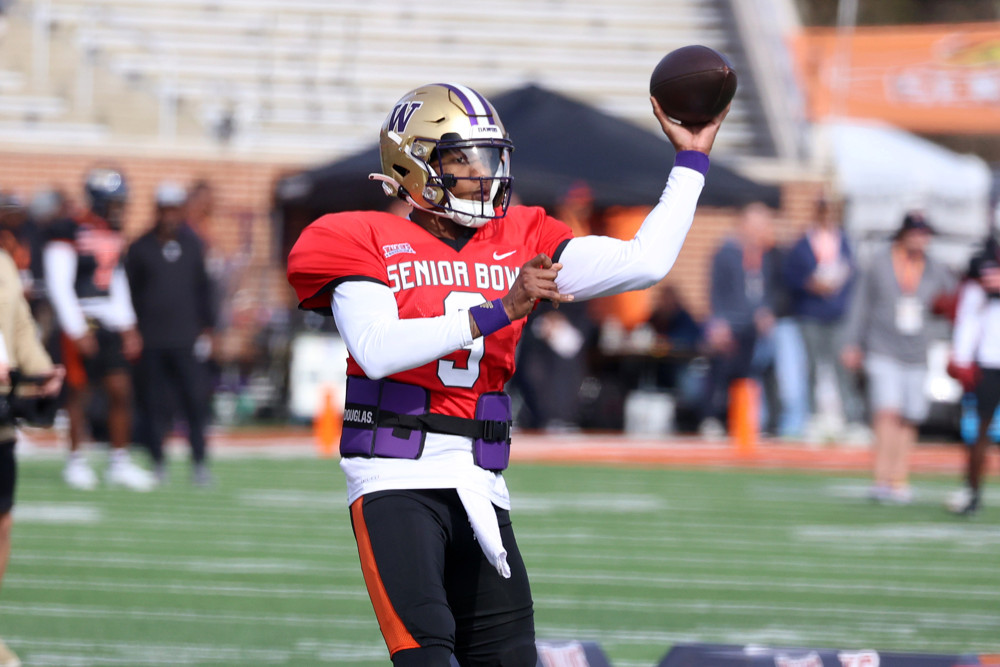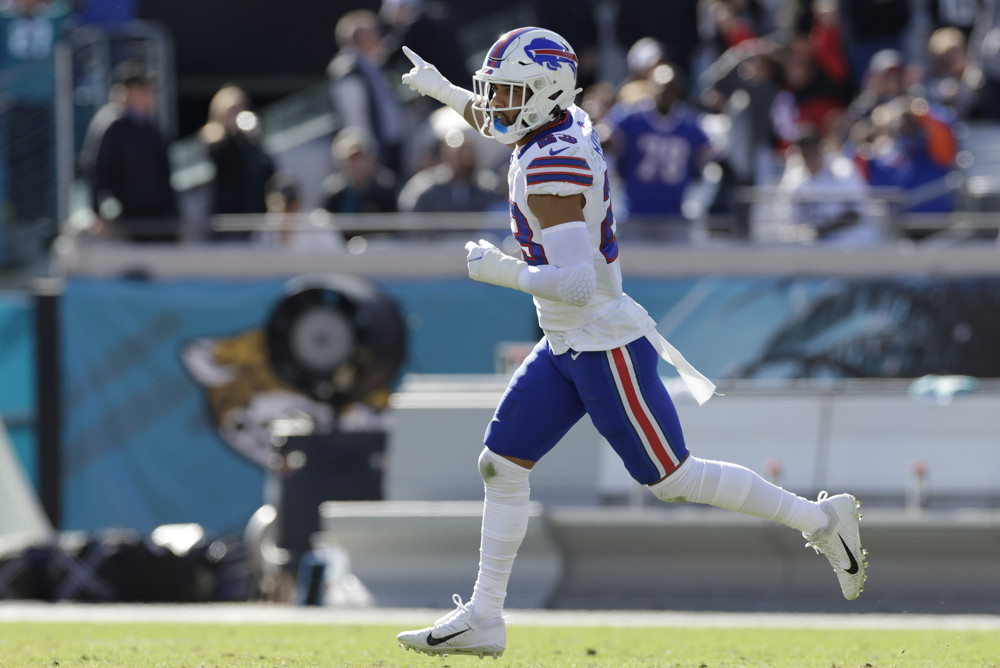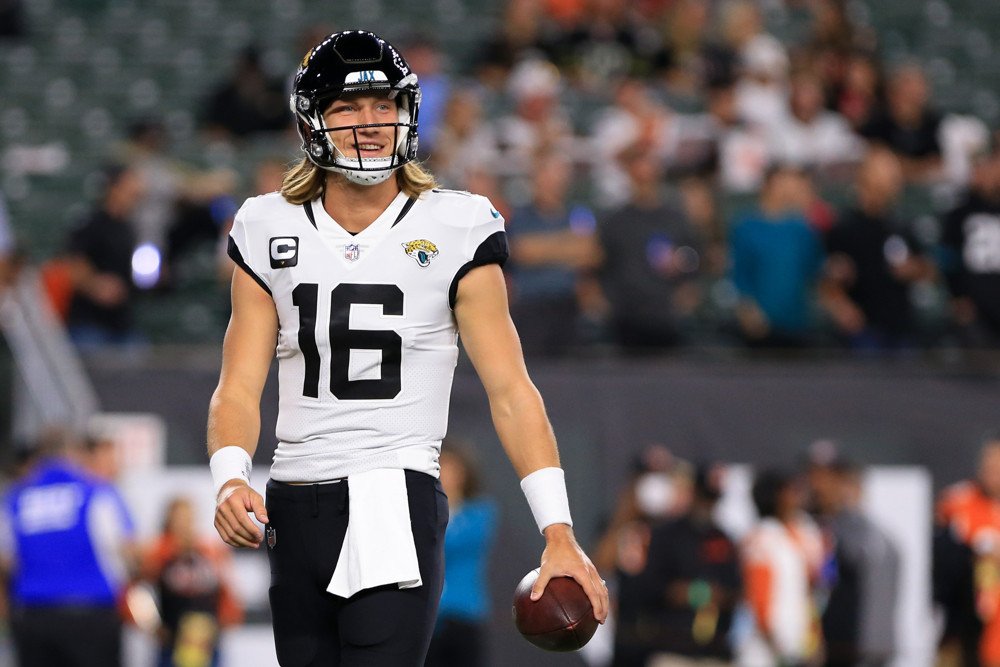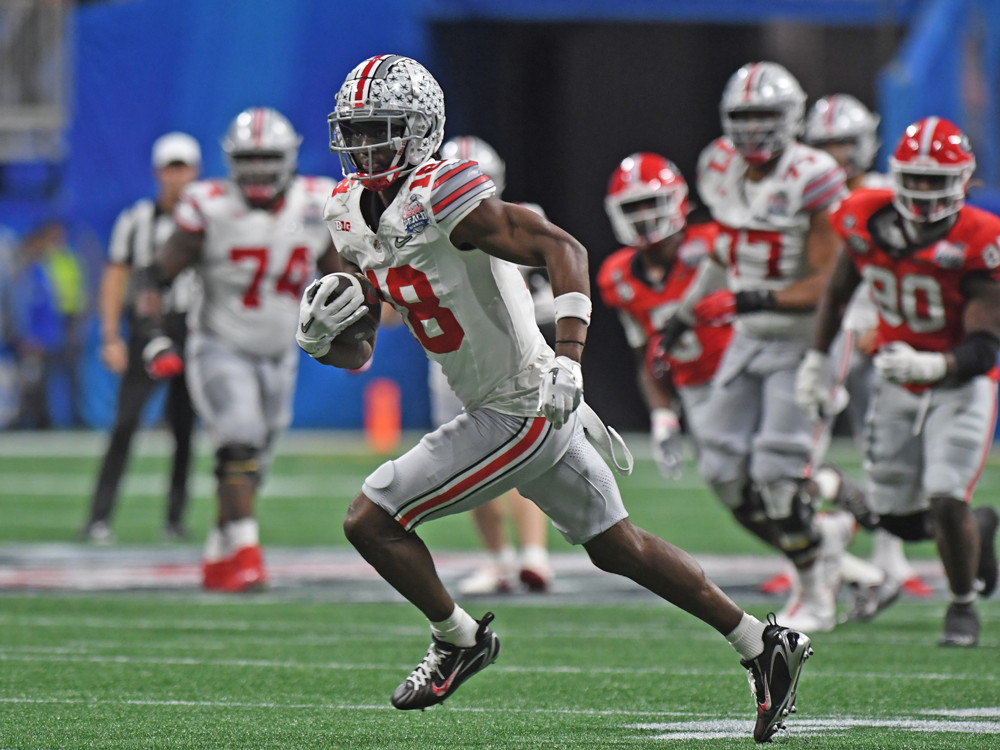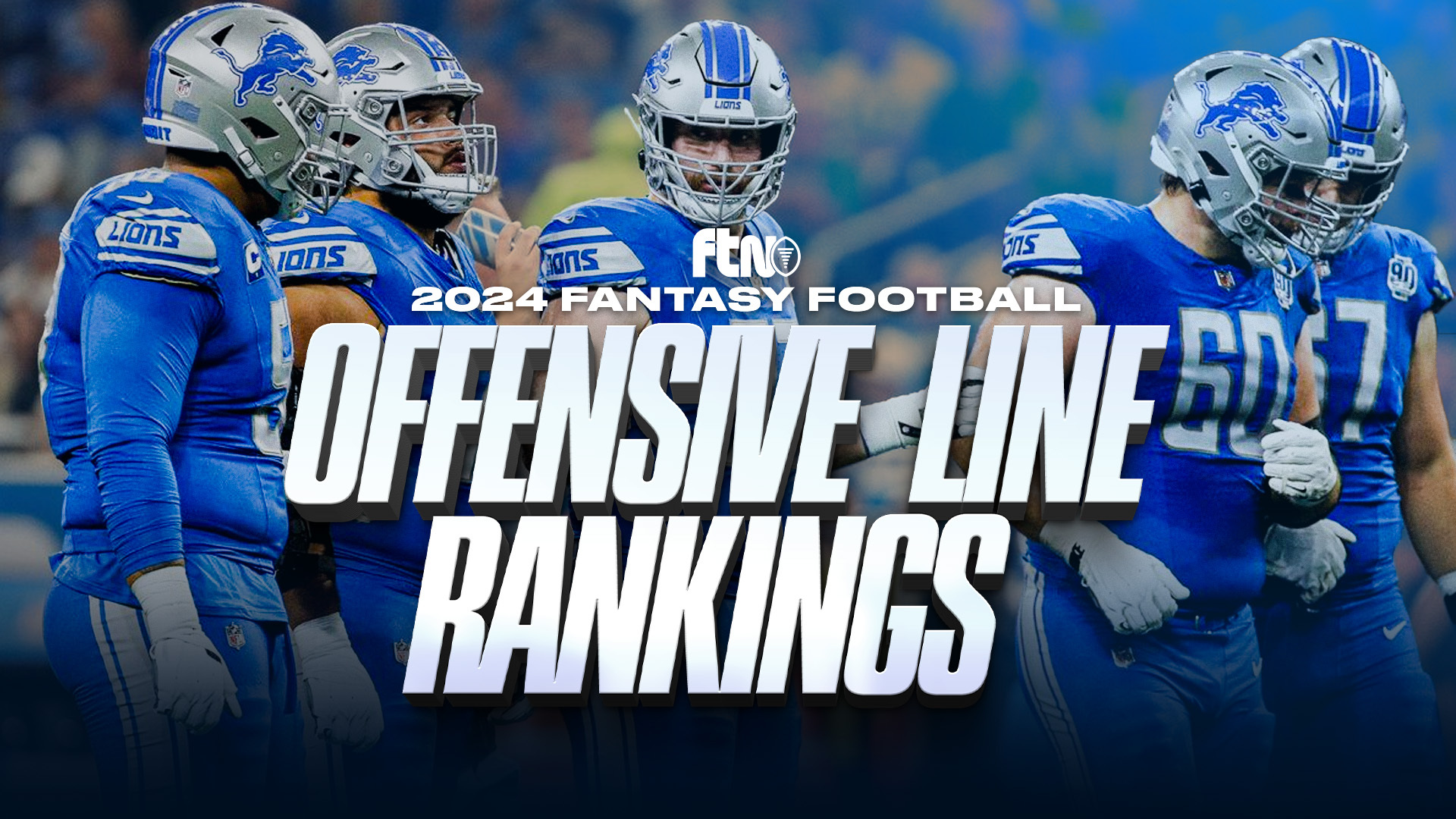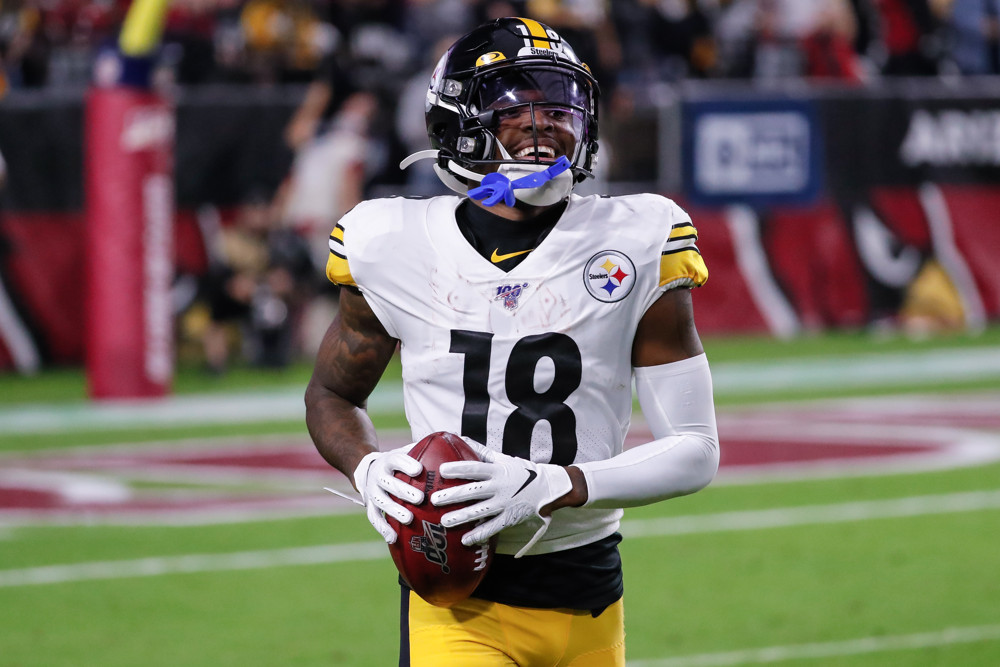
(Welcome to the FTN Fantasy NFL Coaching & Coordinator Series. All summer, our Adam Pfeifer will be looking at every team’s coaching staff through a fantasy football lens, to see what means what and how a fantasy manager can capitalize on it. Today: The Detroit Lions.)
Detroit Lions Head Coach: Dan Campbell
Lions head coach since 2021
During the 2021 season, we saw a glimpse of what the Lions could eventually be years down the road. In Dan Campbell’s first season as the head coach, Detroit posted an ugly 3-13-1 record, but it didn’t tell the entire story. Right out of the gate, you could tell that Campbell was going to be a coach the players would love to play for. He is so passionate and it shows, whether he is in the meeting rooms, on the sidelines or in front of the microphone at a press conference. And that passion swept throughout the entire Detroit locker room.
Yes, the Lions only won three games that season. However, they covered the spread 64.7% of the time, tied for the fourth-highest rate in the NFL. Meanwhile, eight different games were decided by just one score, and they were mere plays away from upsetting the Ravens, 49ers and Vikings. They also beat the Cardinals 30-12 in Week 15. So yes, this team was much better than their 2021 record suggests.

In Campbell’s second season, the Lions took a huge step forward and have suddenly become everyone’s favorite team. Detroit finished the 2022 season with a 9-8 record and were a Seattle Seahawks defeat away from making the playoffs. Campbell continues to do a tremendous job on the sidelines, in the locker room, in the meeting rooms, you name it. He has changed the entire culture of this franchise and suddenly, Detroit is legitimately shaping up as one of the best teams in the NFC. Campbell was aggressive in every way last season, truly trusting his offense to get the job done. No team in football went for it on fourth down more often than the Lions last season, who did so 31.6% of the time. And in the final game of the season, the Lions held a four-point lead against Green Bay with 1:12 left in the fourth quarter. In Green Bay territory, Detroit faced fourth-and-1 from the red zone and instead of kicking the field goal and giving the ball back to Aaron Rodgers, the Lions went for it, went empty and completed a game-sealing pass to DJ Chark. Campbell and the Lions are rapidly ascending, while their innovative and manipulative offensive coordinator has emerged as arguably the best in the game today.
Offensive Coordinator: Ben Johnson
Lions OC since 2022, passing game coordinator in 2021
The 2021 Season
The 2022 season was Johnson’s first as Detroit’s offensive coordinator. That said, he did have his fingerprints on the offense back in 2021. To start the 2021 campaign, offensive coordinator Anthony Lynn was calling the plays. However, starting in Week 10, Campbell took over playcalling duties, while current offensive coordinator Ben Johnson was elevated to passing game coordinator. In Weeks 1-8 (before Detroit’s bye), the Lions sported the league’s seventh-highest neutral-script rush rate at 46.1%. And after Campbell took over playcalling duties, the Lions remained a run-first team, still ranking seventh in neutral-script rush rate (48.3%). So what exactly changed? While Campbell clearly still made an effort to establish the run, he also implemented more play-action than we saw during the first half of the season. In Weeks 1-8, Jared Goff ranked 33rd among 36 qualified quarterbacks in play-action dropback rate (17.9%). However, in the five games he played after Campbell took over the playcalling duties, Goff’s play-action dropback rate jumped up to 28.4%, which was tied with Tim Boyle, who started three games for the Lions during that stretch, for 11th among qualified signal callers.
During that season, the Lions’ aerial attack was that of a thousand paper cuts. There was very little downfield passing game, as quarterback Jared Goff sported the league’s lowest intended air yards per pass attempt (6.4), while his 3.0 completed air yards per pass attempt was the second-lowest mark in football. Just 8.5% of his pass attempts traveled 20 yards or more down the field, one of the lowest rates in the league. During the first eight weeks of last season, Goff threw a screen pass on 9.4% of his dropbacks. But after Campbell started calling plays, that number climbed to nearly 11%, while Boyle actually ranked second among all qualified signal callers with a 14.7% dropback rate off screens (Weeks 10-18). Campbell and Johnson did a pretty good job of scheming his top players touches on offense, especially during Amon-Ra St. Brown’s dominant play down the stretch. St. Brown would often line up in the backfield during the weeks D’Andre Swift and T.J. Hockenson were out, giving Detroit’s top receiver more free releases and easier paths to touches. Over the course of the season, St. Brown lined up in the backfield 13 total times, with 11 of those instances coming in Weeks 13-18.
The 2022 Season
In 2022, Johnson received the keys to the offense, and he cruised. Johnson built a top-five offense in Detroit, as the Lions ranked fourth in points (2.48), third in yards (36.6) and second in plays (6.4) per drive last season. They also scored points on 43.2% of drives, the third-highest rate in football behind only the Chiefs and Bills. Oh, and Detroit also posted the fourth-highest red zone conversion rate, scoring touchdowns on 66.2% of red zone trips last year. Johnson’s schemes were outstanding and had opposing defensive coordinators playing catch-up more often than not. We’ll dive into that more in a little bit but let’s talk about the passing game, shall we?
The 2021 offense featured a lot of short, quick-hitting passes from quarterback Jared Goff, and that didn’t change too much in 2022. Goff’s intended air yards per pass attempt did climb, but only from 6.4 to 7.0, still a bottom-10 mark in the league. Meanwhile, just 9.4% of his total pass attempts traveled 20 yards or more down the field, tied for the eighth-lowest rate among qualified signal callers. And according to FTN Data, Goff targeted shallow cross and drag routes 8.5% of the time, the fifth-highest rate in football. Meanwhile, just 5.1% of his pass attempts were on go routes, a bottom-five rate among qualified quarterbacks. A lot of it is definitely due to personnel, as their best offensive player thrives in the intermediate areas of the field, while the Lions were also without Jameson Williams until Week 13. And even when he returned, Williams was very limited, logging just 74 offensive snaps in six contests. We’ll see if there is an uptick in deep passes this season, but Detroit will once again be without Williams for some time as he serves a six-game suspension.
Of course, the focal point of this entire passing attack is Amon-Ra St. Brown, and I love the way Johnson utilizes him in this offense. We saw it toward the end of the 2021 campaign where the Lions would move St. Brown all over the formation and scheme touches for him, which is what you are supposed to do with your best player. Again, 11 of his 13 snaps out of the backfield in 2021 came during the weeks where Johnson was the passing game coordinator. This past season, St. Brown lined up out of the backfield 14 times and in-line 12 times. Pre-snap motion was also a huge part of Detroit’s offense, as the Lions used it 47.3% of the time last year, the fifth-highest rate in the NFL. And in particular, St. Brown ranked fifth in the league in routes (29) and targets (29) when in motion before the snap. Johnson did an outstanding job of scheming up favorable matchups for St. Brown, especially in zone coverage where the third-year wideout really excels. St. Brown ranked 12th in yards per route run against zone coverage last year (2.26), while sporting a 28% target share. The Lions will often come out in 21 personnel, forcing defenses to match with base personnel. Then, they would motion running backs and tight ends out wide, giving St. Brown room to operate in the middle of the field. St. Brown can win against top defensive backs but if you can get him one-on-one matchups against linebackers, why wouldn’t you? Johnson tried to do that as much as possible and according to FTN Data, St. Brown ran 63 routes with a linebacker as the primary defender last year, the fifth most among wideouts. Meanwhile, 38 of his 146 targets (26%) came against linebackers. Between his tremendous skill-set and how brilliant Johnson is at putting him in the best positions to succeed, St. Brown remains an elite fantasy wideout.
| Player | Team | Routes vs. LBs | Rank |
| CeeDee Lamb | Dallas | 105 | 1st |
| Christian Kirk | Jacksonville | 89 | 2nd |
| Tyreek Hill | Miami | 74 | 3rd |
| Chris Godwin | Tampa Bay | 66 | 4th |
| Amon-Ra St. Brown | Detroit | 63 | 5th |
Per FTN Data
Detroit primarily operated under center this past season, as they posted the highest under-center rate in the NFL at 49%. Goff was really efficient when throwing from under center, too, completing 68.4% of his passes for 1,474 yards, 16 touchdowns and three interceptions on 168 attempts. As a result, the Lions 51% shotgun rate was the lowest in all of football, while they only lined up out of the shotgun formation on 29% of first downs last year, the fourth-lowest rate. And as we discussed, pre-snap motion was a huge part of this Detroit offense, as they ranked fifth in the league in pre-snap motion rate (47.3%).
But it wasn’t just with St. Brown.
Remember earlier when we were talking about how aggressive the Lions were? Going for it on fourth down more than any team in football, Detroit played with zero fear. That was especially the case in a Week 14 game against the Minnesota Vikings. Up by eight points with less than two minutes remaining in the fourth quarter, the Lions faced a pivotal 3rd down and 7. Pick it up and the game is essentially over. Or you could just run the ball, force Minnesota to use a timeout, pin them deep with a punt and see if they can drive the field. But Johnson went for it with one of the best play calls of the year. Detroit had been putting right tackle Penei Sewell in motion to gain momentum as a lead blocker in the run game. And one of the reasons why Johnson is such a good offensive coordinator is he sets defenses up with looks that they believe are similar. On the aforementioned third down, Sewell once again came in motion before the snap, this time from left to right. But instead of handing the football off, Detroit went play-action, Sewell leaked out to the flat and caught a pass to move the chains. You just know Johnson was saving that play for a rainy day and because Detroit runs so many different plays from the same look, the Vikings were completely fooled.
Power Run Game
Speaking of Sewell, Detroit’s strong offensive line truly sets the tone for this offense. Behind that elite unit, Johnson mostly dials up a power-running gap scheme. This past season, Jamaal Williams finished fourth in the NFL in runs out of gap concepts with 153, while 216 of his 262 carries were from under center (82.4%). Detroit likes to run the football out of tight 11 personnel formations with plenty of movement. According to FTN Data, the Lions had 246 rushing attempts with pre-snap motion, the sixth-most in the league. What makes their run game so tough to slow down (other than the fact that their offensive line is impenetrable) is the fact that Johnson has so many different plays from the same look. One play, he’ll call outside zone with a wideout in motion and gain three or four yards. Three plays later, he’ll show the same look with the same pre-snap motion, only for it to be a completely different play that catches the defense sleeping.
Of course, we know the Lions loved running the football in scoring position. Detroit posted the league’s eighth-highest rush rate from inside the red zone last season (55.6%), which led to Williams comfortably leading the league in rushing attempts from inside the 5-yard line with 28. Williams signed with the Saints during free agency, while the Lions signed David Montgomery, who will have that same role in 2023. Montgomery is an ideal fit for Detroit’s gap scheme, while running behind this offensive line will be a dream come true for the former Chicago running back.
 Jahmyr Gibbs’ Usage
Jahmyr Gibbs’ Usage
Detroit surprised many by selecting running back Jahmyr Gibbs 12th overall in this year’s draft. The move signaled the end of D’Andre Swift’s time in Detroit, who was traded to Philadelphia two days later. It’ll be interesting to see how Ben Johnson and the Lions utilize Gibbs, who is one of the best pass-catching running backs to enter the league in quite some time. Over three collegiate seasons, Gibbs caught 103 passes with only two drops. He can line up on the outside against defensive backs and if you get him in coverage against a linebacker, you can forget about it. Between the draft capital and Swift’s departure, Gibbs should be heavily involved right away, especially in the passing game. Over the past two seasons, running backs have accounted for about 23% of the team targets for Detroit. Swift averaged 52 receptions over his first three seasons in Detroit and over the last two seasons, he has ranked 2nd (18.4%) and sixth (15.1%) among running backs in target share. Johnson has already mentioned that Gibbs will play out wide and from the slot more than he did at Alabama, and you’d think that will be especially true while Jameson Williams is out of the lineup. In an offense that does a lot of damage in the short/intermediate areas of the field, Gibbs could be a PPR machine right out of the gate.
Defensive Coordinator: Aaron Glenn
Lions DC since 2021
2023 will be Glenn’s third season running the defense in Detroit. Glenn was the defensive backs coach in New Orleans during the same time Campbell was there, so it wasn’t a surprise to see the two reunite in Detroit last season. During his first season with the Lions, Glenn implemented a 3-4 defensive scheme, however, a change in personnel led to more 4-3 usage from the Lions this past season. Detroit remained one of the more man-heavy teams in football, running it a healthy 58% of the time, the third-highest rate in football. Defenses that play a lot of man coverage tend to surrender rushing yards to quarterbacks, as defensive backs have their backs turned while in coverage. And sure enough, no team in football allowed more rushing yards per game to opposing quarterbacks than the Lions last year (41.2).
Fantasy Football Takeaways
Jared Goff’s 2022 campaign was a successful one, as the veteran tossed 29 touchdowns to just seven interceptions. He finished as the QB10 in fantasy, though he had some pretty notable home/road splits last season. In nine home games, Goff averaged 274.6 passing yards, 2.56 passing touchdowns and 20.9 fantasy points per game. 23 of his 29 passing touchdowns from last year came in the comfy confines of the Detroit dome. However, Goff averaged just 245.7 passing yards, 0.75 touchdown passes and 12.4 fantasy points per game in eight road outings. Between an elite offensive line and strong running backs and wideouts, Goff has a terrific supporting cast and should be able to post, at the very least, high-end QB2 numbers for fantasy.
Jahmyr Gibbs joins the Lions after being selected 12th overall in April. He’ll at least take on the D’Andre Swift role, which was often limited to around 14-16 touches. Of course, if 6-8 of those touches are receptions, that would be great for fantasy. Over the past two seasons, running backs have accounted for about 23% of the team targets for Detroit. Swift averaged 52 receptions over his first three seasons in Detroit and over the last two seasons, he has ranked 2nd (18.4%) and sixth (15.1%) among running backs in target share. The short-yardage role is unlikely to be his, especially considering it wasn’t even his during his time at both Alabama and Georgia Tech. Still, I expect efficiency and pass game usage right away from Gibbs, who settles in as a fine RB2 in PPR formats.
David Montgomery, meanwhile, will handle the role left by Jamaal Williams, which was obviously extremely fantasy-friendly in 2022. Williams finished the season as the RB13 in PPR leagues, largely due to a whopping 17 rushing scores. His 28 carries from inside the 5-yard line comfortably led the league, while averaging a solid 15.4 rushing attempts per game. Williams was definitely dependent on touchdowns, as he only averaged about seven fantasy points per game in the contests he didn’t find the end zone. But Montgomery can do more in the passing game than Williams and is a good fit for this scheme. If you wait at the running back position in your drafts, I have zero problem targeting Montgomery as your RB2.

What a tremendous start to a career for Amon-Ra St. Brown. He quickly proved he was legit during his rookie season but truly broke out during his sophomore year, hauling in 106 balls for 1,161 yards and six touchdowns. St. Brown finished as the WR7 in fantasy, as he was the focal point of this entire offense. He had 118 first-read targets, while his 30% target per route run rate trailed only Tyreek Hill among qualified wide receivers. St. Brown also got unlucky in the touchdown department, as he was tackled inside the five-yard line six times, the third-most in football. He was also tackled at the one-yard line twice. Assuming Montgomery doesn’t convert as many goal-line carries into touchdowns as Wiliams did last year, double-digit scores are attainable for St. Brown, who is already going to be among the league leaders in targets and receptions. Draft him as your WR1 and enjoy the fantastic weekly floor.
After recovering from an ACL tear, Jameson Williams was limited to about 75 snaps in his rookie season. Williams is fully healthy now but will miss the first six games of the season due to suspension. The Lions are really looking for his speed and dynamic play-making ability down the field, especially considering he’d be a perfect complement to St. Brown. There is serious upside here once he is playing a full allotment of snaps.
The Lions drafted tight end Sam LaPorta in the second round of the draft, and considering the state of the tight end depth chart, the rookie has a great chance of starting Week 1. LaPorta was featured in Iowa’s offense last season, sporting an insane 30% target share. He showed versatility, playing out wide 20% of the time, while his 20 missed tackles forced ranked second college football. LaPorta is an ideal second tight end to target if you are taking multiple home run swings at the position in hopes that one hits.

















